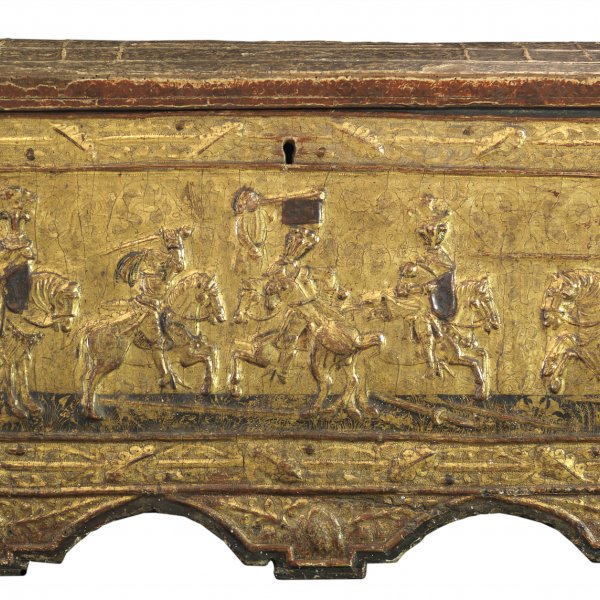Attributted to Neroccio workshop of De'Landi
Both a painter and a sculptor, Neroccio di Bartolomeo di Benedetto de´ Landi del Poggio was born into a Sienese aristocratic family. There is a good chance that Neroccio received his early training with Lorenzo di Pietro, also called "Il Vecchietta", for the latter had formed in his workshop nearly all the Sienese artists of the second half of the 15th century. Neroccio's earliest work can be dated back to 1468 when he was commissioned by the Compagnia di San Gerolamo da Siena to produce both a panel and a polychrome terracotta sculpture. (Coor, 1961). During his period of apprenticeship Neroccio met the architect, painter and engineer Francesco di Giorgio Martini, who married one of his cousins in 1469 and became his associate until 1474. Although Neroccio was strongly influenced by Trecento artists such as Simone Martini, his art was also indebted to the Sienese contemporary artistic milieu with particular attention to Sassetta, Vecchietta and Matteo di Giovanni. During his earlier career, the artist produced a variety of altarpieces, including the Madonna and Child with Saints (Siena, Pinacoteca Nazionale) and the lunette of the Annunciation (Yale University Art Gallery), both executed around 1475. By that same time Neroccio also painted one of his most remarkable works: the Portrait of a Woman (Washington National Gallery) which is today considered a rare instance of Quattrocento Sienese portraiture. Furthermore, as an example of Neroccio's mature style it is worth mentioning the 1490s Madonna and Child with Saints (Indianapolis Museum of Art). Throughout his career, Neroccio de' Landi pre-eminently executed small-scale devotional paintings characterised by delicately outlined personages set in lyrical and idealised atmospheres. His sophisticated forms and refined chromaticism together with his peculiar ability to work with different materials and supports led him to become one of most coveted artists of the Sienese area.
Dominique Lora





